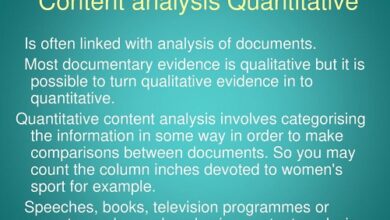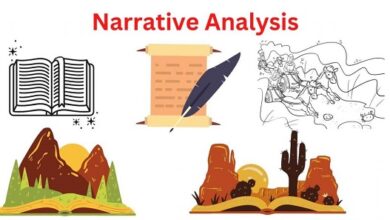What is Deductive method features and examples
The deductive method is a type of reasoning that starts from generalities to reach specific conclusions. In the process of deductive reasoning, the person starts from facts or premises to reach logical conclusions; that is, follow. If the facts or premises are true, the conclusion is also true.
An example of the use of the deductive method is: 1-All men are living beings (first premise). 2-Albert Einstein is a man (second premise). 3-Therefore, Albert Einstein is a living being (conclusion).
This methodology was used by the Greeks in ancient times; for this reason it is known as the first scientific method. However, this procedure has certain characteristics that prevent it from being considered completely true.
Those who argue this in relation to the deductive method point out that it is possible to infer particular scenarios from universal principles, but that this does not imply that the former are true.
For this reason, information collected through investigations based on the deductive method must subsequently be corroborated by other mechanisms.
Features of the deductive method
Part of a universal principle
The approaches generated by the deductive method have their origin in a general statement.
This methodology is characterized by moving from the most general to the most specific, as its main objective is to assess the possibility of applying a universal principle in a specific scenario.
Not based on experimentation
This method is purely theoretical. For this reason, he does not base his studies on experiments or other actions that have the laboratory as a scenario.
It is a methodology with a much more argumentative and predictive approach, with special application in the so-called formal sciences, disciplines whose basic knowledge is clearly rational and abstract.
Depends on logic
Logic and abstraction are elements that characterize the deductive method. In fact, logic is the way in which argumentative structures are generated that allow the design of specific scenarios based on general principles.
It is systematic
The deductive method is carried out through a series of defined and well-structured processes. This order in the app is essential to get useful results.
Represents the beginning of the search for knowledge
Thanks to the deductive method, it is possible to obtain information about possible specific scenarios that can be generated from notions of a universal nature.
Therefore, the observations generated in this area are, in many cases, the starting point for opening new lines of research and testing hypotheses.
What is the deductive method for?
Thanks to the deductive method, it is possible to formulate theories and laws applicable to a specific context. Starting from a general principle, it is possible to predict these specific laws, as well as the nature of the influence they will have in certain scenarios.
Likewise, the deductive method makes it possible to extrapolate general premises. Therefore, the conclusions generated from this process serve to predict the behavior, or also the characteristics of a hypothetical scenario generated directly from the general base.
This implies that, thanks to this method, it is possible to generate hypotheses, which can be developed in specific investigations. One of the reasons why this method is relevant is that it generates new knowledge and new lines of study.
On the other hand, through the deductive method, hypotheses can be tested. For this reason, this method is widely used to confirm or deny possible hypotheses in scientific research.
Steps of the deductive method
Determine the general principle to consider
In the deductive method, the first action corresponds to the choice of the universal premise from which to start. This consideration must be completely true and valid, it must be an undeniable reality and as broad as possible.
It is essential to start with a general principle that is completely reliable, otherwise the entire deduction process that will be carried out in the following steps will be compromised, which implies that the result is probably not valid.
To better illustrate this first step, let’s use the following general principle example: “Diana is a woman.”
Apply the corresponding inferential laws
When making the transition between the general premise and the particular theorem, it is necessary to have a second premise, which must also be completely real and verifiable.
This second consideration takes into account one element related to the general principle and links it to another, but this has to do with the conclusion you want to reach. An example of this can be the statement: “all women are human beings”.
Declare the particular propositions
Once the two statements are determined, the next phase of the deductive method involves the presentation of the final conclusion that must be supported by the truth of the two previous premises, both of a general nature.
If we use the examples we have described to illustrate the previous phases, the specific proposition would be “Diana is a human being”.
Confirm or deny the proposition
Once the specific premise based on general principles is reached, it is necessary to verify the veracity of this statement. If this is not true, it must be denied and the premises must be stated in a different way.
Generate the corresponding laws
When it has been proven that the definitive proposition has coherence, validity and veracity, it is possible to transcend this knowledge through the exposition of laws or theories.
These laws have the function of defining the scenarios that have the characteristics represented in the conclusive premise. In this way, it is possible to make it transcendental.
Types of deductive reasoning
– Law of Detachment
A single statement is made and a hypothesis (P) is proposed. The conclusion (Q) is deduced from this argument and its hypothesis:
- P → Q (conditional statement)
- P (hypothesis is proposed)
- Q (the conclusion is deducted)
For this reason, it can be said that:
- If an angle satisfies 90° < A < 180°, then A is an obtuse angle.
- A = 120°
A is an obtuse angle.
Examples of the law of detachment
- If my brother is 19 and my sister is 21, and I’m older than my brother and younger than my sister, then I’m 20.
- If there are five people in my family and three are women, two are men.
- If I have to buy 100 chocolate and vanilla cakes and I already have 60 chocolate cakes, I need 40 vanilla.
- If the sum of all angles in a triangle is equal to 180° and I have two angles of 30 each, then the third angle is 120°.
– Law of syllogism
In this law, two conditional arguments are established and a conclusion is formed by combining the hypothesis of one argument with the conclusion of another. For example:
- If Pedro is sick, he doesn’t go to school.
- If Peter does not attend school, he will miss his homework.
So, if Peter is sick, he will miss the task.
Examples of syllogisms
- All women are beautiful.
- Claudia is a woman.
- Claudia is beautiful.
- Some mammals swim.
- I’m afraid of animals that swim.
- I’m afraid of some mammals.
- No human being can fly.
- Jaime is a human being.
- Jaime cannot fly.
- All dogs know how to bark.
- Lucas is a dog.
- Lucas knows how to bark.
- Every Sunday makes me sleepy.
- Today is Sunday.
- Today I’m sleepy.
- Electric cars are expensive.
- Renault has launched an electric car on the market.
- Renault’s car is expensive.
- All planets have a core.
- Saturn is a planet.
- Saturn has a core.
– Law of counter-reciprocal
This law states that, conditionally, if the conclusion is false, the hypothesis must also be false. An example of this law would be:
- If it is raining, there will be no clouds in the sky.
- There are no clouds in the sky, so it’s raining.
Examples of the law of counter-reciprocal
- If she laughs, she is sad.
- She’s sad so she’s laughing
- If it rains, the match is canceled
- The party’s canceled so it’s not raining
- At most, when I’m stressed.
- I’m not stressed, so I don’t eat much.
Examples of deductive method
- Joseph is a boy.
- All children are human beings.
- Joseph is a human being.
- – To make buildings, plans are needed.
- A building is a construction.
- Plans are needed to build a building.
- – The water gets wet.
- Carolina was in contact with the water.
- Carolina is wet.
- – Salmon is a fish.
- Fish live in water.
- Salmon lives in water.
- – If you touch fire, you burn.
- Peter touched the fire.
- Peter was burned.
- – People who wear glasses have vision difficulties.
- Christina wears glasses.
- Cristina has vision difficulties.
- – If Antonio is sick, he will be absent. If Antonio is absent, he will miss his class work. Antonio is absent, so he missed his classwork.
- – If it’s raining, there are clouds in the sky. There are no clouds in the sky, so it’s not raining.
- – Everyone who eats carrots is a quarterback. Juan eats carrots. So Juan is a quarterback. (Here we can see the weakness of the deductive method.)
- – Noble gases are stable. Neon is a noble gas; therefore, neon is stable.
- – This dog always barks when someone is at the door. The dog doesn’t bark, so there’s no one at the door.
- – No one has lived more than 122 years. So, humans die before age 122.
- – All cows are mammals. Trina is a cow. So Trina is a mammal.
- – All the women in my family have a university degree. My aunt Cintia is visiting us. So Aunt Cintia has a university degree.
- – Vegetables are healthy. Carrot is a vegetable. So the carrot is healthy.
- – Mexicans eat spicy. Nora is Mexican, so Nora eats spicy.
- – Mammals take care of their young. The cat nurses its kittens, so the cat is a mammal.


